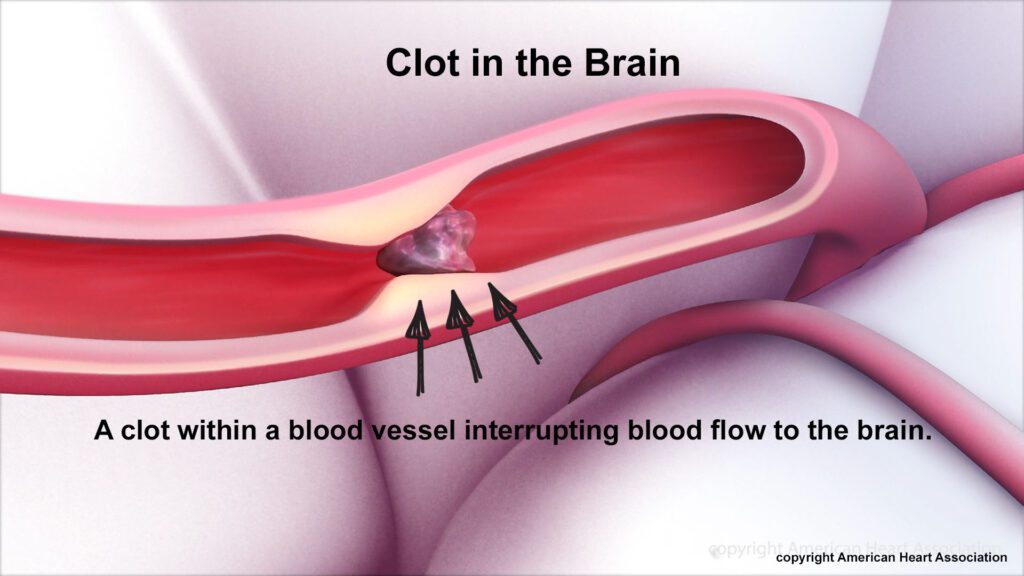Hailey Bieber updated fans about her recent health scare through a candid video, titled “telling my story,” posted to her popular YouTube channel and on Instagram. During the twelve-minute clip, the 25-year-old model recounted the “scariest moment” of her life in which she suffered a Transient Ischemic Attack (TIA), often called a mini-stroke.
According to the American Stroke Association, a TIA is a temporary blockage of blood flow to the brain. While symptoms typically improve quickly, TIAs can be a precursor to a full-blown, debilitating or deadly stroke. In fact, approximately 15% of all strokes are foretold by a TIA; and about one-third of people who have a TIA then go on to have a more severe stroke within one year.
Hailey Bieber Recounts Mini-Stroke Occurrence
On March 10, 2022, Beiber says she was enjoying breakfast with her husband, singer Justin Bieber, when she experienced a “weird sensation” of tingling down her arm and numbness in her fingertips. More symptoms followed, including facial drooping and the inability to speak.
“The right side of my face started drooping, I couldn’t get a sentence out,” she calmly describes in the viral testimonial. “Immediately I thought I was having a stroke.”
At the hospital, doctors discovered that a blood clot had traveled to Beiber’s brain. The next day, additional testing revealed that she had a type of hole in her heart called a patent foramen ovale (PFO). This undiagnosed congenital defect contributed to Bieber’s TIA, as did three other factors.

What Stroke Risk Factors Did Hailey Bieber Have?
Bieber says three factors caused the blood clot, which traveled through the PFO up to her brain.
“One was that I just recently started birth control pills, which I should have never been on because I am somebody who suffered from migraines anyway,” she attests. “And I just did not talk to my doctor about this.” The second factor, according to her medical team, was that she recently had COVID-19 and the third was that she had also recently taken a lengthy international flight. All three of these factors happened within “a very short amount of time,” thus creating what Bieber describes as “the perfect storm.”
“The conclusion was that I had a blood clot that traveled into my heart and instead of what typically happens — when you have a small blood clot is that the heart will filter the blood clot to your lungs and your lungs will absorb it because the lungs are so big and they can handle it,” she says. “What happened with me is that my blood clot actually escaped through the flap or the hole in my heart and it traveled to my brain. And that is why I suffered a TIA.”
Bieber’s PFO was classified as a grade 5, which is the most severe level; so it needed to be addressed to help limit future complications. She underwent a procedure to close the hole between her heart chambers. Bieber has since remained on a daily regimen of blood thinners and aspirin. She says she “feels so much relief” and is grateful to all the doctors who helped treat her.

TIA and Stroke Risk Factors and Warning Signs
The daughter of actor Stephen Baldwin, Bieber rose to fame modeling for companies like Guess, Ralph Lauren and Tommy Hilfiger. Her Instagram account has a whopping 43.6 million followers and, at press time for this article, her “telling my story” video had garnered more than 4.5 million views. Stroke is the No. 5 cause of death and a leading cause of disability in the U.S. Therefore, while we are pleased to know that Bieber is recovering well, AmeriDisability also applauds her effort to use her vast platform to educate others about PFOs, TIAs and strokes. Perhaps her experience will help save the lives of others.
Anyone can have a TIA, according to the American Stroke Association, but the risk does increase with age. If you’ve previously had a stroke, do pay careful attention to the signs of TIA, because they could signal a second stroke in your future. Some common warning signals of TIA include the sudden onset of the following:
- Weakness, numbness or paralysis on one side of your body
- Slurred speech or difficulty understanding others
- Blindness in one or both eyes
- Dizziness
- Severe headache with no apparent cause
The risk factors are smoking, cardiovascular disease, diabetes and, as with Bieber’s occurrence, blood clots called embolisms. Get help immediately if you think you (or someone you are with) could be having a TIA or stroke.
Act Fast by Remembering this Lifesaving Acronym
Here’s a simple takeaway… To spot a stroke, use the letters “F.A.S.T.”
- F = Face Drooping – Does one side of the face droop or is it numb? Ask the person to smile. Is the person’s smile uneven?
- A = Arm Weakness – Is one arm weak or numb? Ask the person to raise both arms. Does one arm drift downward?
- S = Speech Difficulty – Is speech slurred?
- T = Time to call 911 immediately! And, if possible, also note the time that symptoms began.






